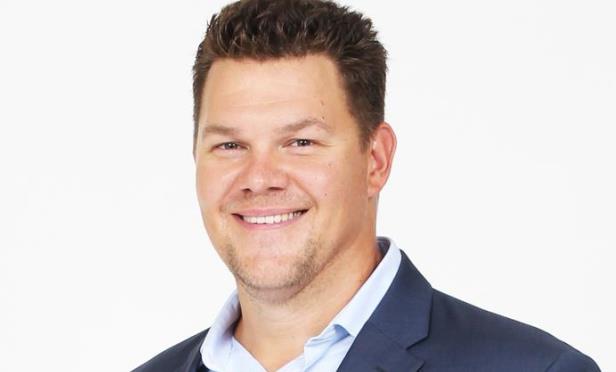 Allen says developers benefit from Stay Alfred's multi-unit master leases in a number of ways.
Allen says developers benefit from Stay Alfred's multi-unit master leases in a number of ways.
DALLAS—Stay Alfred offers property developers and owners what it has coined a “master lease” model for short-term rentals, including individual leases, partial building leases, full building leases and national partnerships with developers. Essentially, the developer is able to instantly off-load vacant units and Stay Alfred can market them as short-term rentals that provide an authentic living experience in urban downtowns.
This flexible accommodations firm offers upscale travel residences in 30 downtown neighborhoods (including Dallas, Houston, Seattle and Austin) with more than 1.5 million square feet under management. It has partnered with numerous US developers, owners and multifamily property managers. In this exclusive, Jordan Allen, CEO of Stay Alfred, recently shared insights about the concept, the master lease model and its partners.
GlobeSt.com: Stay Alfred sounds similar to flex space in the office sector, but for hospitality/travel. What's the value for multifamily developers/owners?
Allen: Similar to flex space in the office sector, short-term rental programs provide a new option for developers in terms of choosing the highest and best use for their assets. When a multifamily owner is looking for a more profitable operating model or needs to accelerate lease-up to close a construction loan, adding a Stay Alfred short-stay program provides an immediate, sustainable solution.
Typically, our partners see a 25% increase in NOI. And, the savings goes beyond eliminating vacancy loss. Developers realize significant operating expense reductions with a Stay Alfred multi-year master lease. For example, when you combine the savings on turnovers and marketing expenses with the stability of a five- to 15-year lease and an annual escalation clause, the math is compelling.
In addition to the financial incentives, Stay Alfred offers value to building residents by providing a lifetime travel discount valid at any of our ever-growing list of destinations. This travel amenity is proving to be a popular lifestyle perk for both Baby Boomers and Millennials alike. With resident renewal rates in upscale buildings at an all-time low, we believe that a Stay Alfred travel discount can become a game changer in the amenities war.
GlobeSt.com: How does the master lease model work for short-term rentals?
Allen: Developers benefit from Stay Alfred's multi-unit master leases in a number of ways to enable a whole new level of stability for the asset. Whether Stay Alfred leases 10 floors, like we did at the 505 Nashville, or an entire building, which is becoming a popular approach, our multi-year master leases include an escalation clause which guarantees the asset will be more profitable each year during the lease. As part of the master lease, Stay Alfred recommends that developers agree to an exclusivity clause, which eliminates the complexity of having several short-term rental operators in buildings at once. With a single short-term rental anchor tenant, operations are streamlined and it's much easier to manage guest guideline compliance to set up both parties for success.
GlobeSt.com: Would this concept work for suburban areas as well as downtowns?
Allen: Travel apartments can work at any place that hotels operate. Travelers find it's a better value than paying for cramped cookie cutter hotel rooms. And, unlike Airbnbs, the guest experience is consistent so there is much less risk involved. Stay Alfred guests get all the perks of upscale apartment living including a full kitchen and in-unit laundry facilities for a similar or lower price than a hotel room. Guests know what to expect across our 2,000-plus units so there are never any surprises. While Stay Alfred is focused on premium urban districts where travel guests can live like locals and walk to everything, it's not surprising that short-term rentals are popping up in suburban markets too. Consumers are demanding more from their accommodations where ever they go, and we think that's great.
GlobeSt.com: What types of partners has Stay Alfred worked with to date?
Allen: As the original and largest provider of short-term rental programs in the US, Stay Alfred has perfected a model that can work for any multifamily developer. From large national players including Greystar, JLL, Lincoln Property Management and Trammell Crow to regional class-A developers, we're in a new phase of expansion that includes adding more units and new projects with existing partners. The opportunity to deepen our relationships with new ventures is the best indication of our performance and our partners' satisfaction with our model.
In terms of new development partners, we generally look for owners of newer upscale buildings in central business districts where you would find hotels. The reasons for wanting to add a short-term rental can vary greatly, from building escalation to lease up and stabilization. We've created a flexible set of options to accommodate every scenario.
Sometimes, buildings ease into the program by starting with a handful of units. We've found, however, that short-term stay programs operate exceptionally well at scale where we can lease entire floors or even full buildings. It's ideal when we can add building features for travelers like a separate lobby that includes luggage storage and a Stay Alfred concierge.
© Touchpoint Markets, All Rights Reserved. Request academic re-use from www.copyright.com. All other uses, submit a request to [email protected]. For more inforrmation visit Asset & Logo Licensing.







